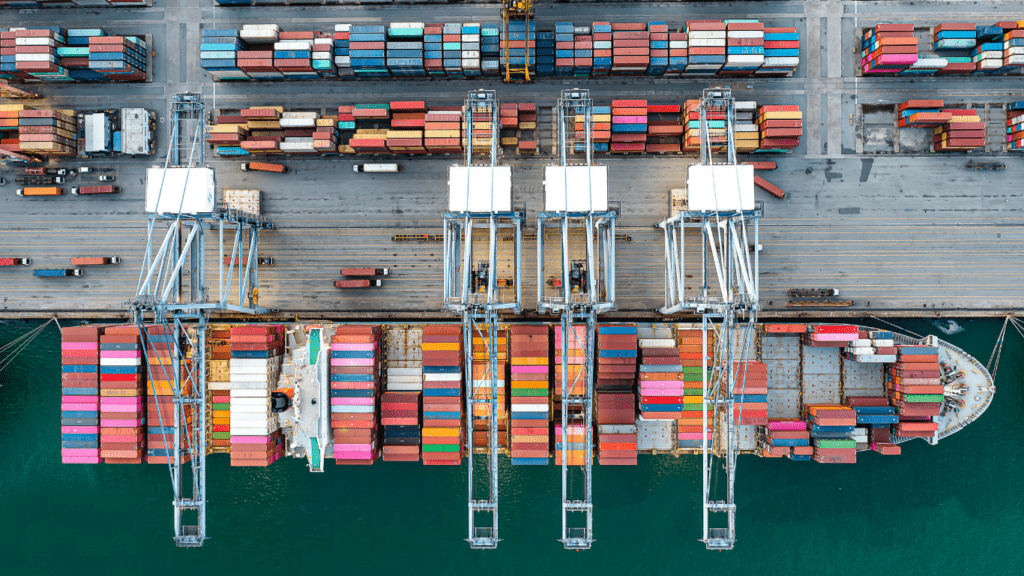The Impact of International Trade on Global Business Landscape
International trade is reshaping global business dynamics, driving economic growth, and altering employment patterns. It’s a key factor for businesses looking to scale and innovate.
Economic Growth and Expansion
Trade boosts economic growth by opening new markets for goods and services. For example, companies can access a broader consumer base, increasing sales and revenue.
A study by the World Trade Organization (2020) indicates that international trade contributes approximately 6% to global GDP annually.
Businesses involved in trade can leverage economies of scale, reducing production costs. Cheaper inputs from diverse markets enhance competitiveness and profitability.
Export-led growth strategies have transformed economies like China and South Korea, proving the tangible benefits of trade.
Job Creation and Employment Patterns
International trade influences job creation by generating new employment opportunities in various sectors. For instance, manufacturing, logistics, and marketing sectors often see job growth related to export activities.
The International Labour Organization (ILO) reports that trade-related jobs account for 20% of global employment. Employment patterns also shift due to trade, as businesses may outsource manufacturing to countries with lower labor costs, like Vietnam or Bangladesh.
While this creates jobs in those regions, it can lead to workforce adjustments domestically. Skilled labor demand increases in export-driven industries, highlighting the need for continuous workforce upskilling and retraining initiatives.
Technological Advancements and International Trade

Technological advancements impact international trade by improving efficiency, reducing costs, and fostering new market opportunities.
Innovations in Shipping and Logistics
Technological innovations in shipping and logistics streamline international trade. Advances like automated warehousing, real-time tracking, and AI-driven supply chain management improve operational efficiency.
For example, automated warehousing uses robots to handle inventory, reducing labor costs. Real-time tracking, using GPS and IoT devices, ensures accurate delivery estimates and enhances customer satisfaction.
AI-driven supply chain management predicts demand and optimizes routes, reducing delays and fuel consumption.
The Rise of E-commerce and Digital Markets
E-commerce, supported by digital technologies, drives international trade by connecting buyers and sellers across borders. Platforms like:
- Amazon
- Alibaba
- eBay
enable small and medium-sized enterprises (SMEs) to reach global audiences.
Digital payment systems simplify transactions, while logistics services like cross-border shipping partners expedite deliveries. For instance, PayPal and Stripe ensure secure global transactions, and companies like DHL and FedEx offer comprehensive international shipping solutions.
Blockchain technology, enhancing transparency and security in transactions, further promotes trust in international e-commerce.
Cultural Exchange and Market Diversity
International trade fuels cultural exchange and broadens market diversity. Businesses can now access diverse markets, offering unique opportunities for growth.
Broadening Consumer Choices
International trade expands consumer choices. Companies introduce products and services from different regions, enriching market variety.
For instance, Japanese electronics, Italian fashion, and Brazilian coffee are now globally accessible, catering to unique consumer preferences. This diversity stimulates competition, motivating businesses to innovate and improve quality.
Challenges of Cultural Integration in Global Markets
Cultural integration poses challenges in global markets. Businesses must navigate different social norms, language barriers, and consumer behaviors.
Misinterpreting cultural nuances can lead to marketing missteps and brand damage. For example, a campaign that resonates in one country might offend in another.
Companies invest in cultural education and local expertise to effectively integrate and avoid pitfalls in diverse markets.
Regulatory Influence on International Business Practices
International trade regulations affect global business, driving companies to adapt practices for compliance.
Trade Agreements and Their Roles
Trade agreements establish rules governing international trade between countries. They aim to reduce or eliminate barriers like tariffs and quotas to promote free trade.
For instance, the North American Free Trade Agreement (NAFTA), replaced by the United States-Mexico-Canada Agreement (USMCA) in 2020, shaped trade policies among the member countries, fostering an environment of economic collaboration.
Trade agreements often create a level playing field by ensuring that signatory countries adhere to standardized practices, which makes it easier for businesses to navigate different markets.
They also protect intellectual property rights, enhance labor standards, and ensure environmental protections, which collectively build a more sustainable global trading system.
Understanding Tariffs and Non-tariff Barriers
Tariffs are taxes imposed on imported goods, increasing their price, which can protect domestic industries from foreign competition. For example, the U.S. imposes tariffs on Chinese electronics to encourage local production.
Non-tariff barriers include quotas, import licenses, and subsidies, which regulate the amount and type of goods entering a country. These barriers can significantly impact a business’s strategy and profitability.
Companies must understand and adapt to these regulatory measures to optimize their operations in global markets. For instance, an European Union quota on agricultural imports from non-member countries affects how businesses approach export strategies and market segmentation.




